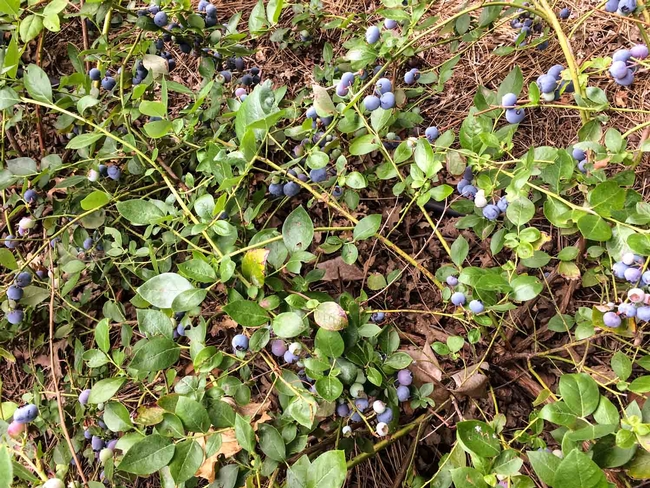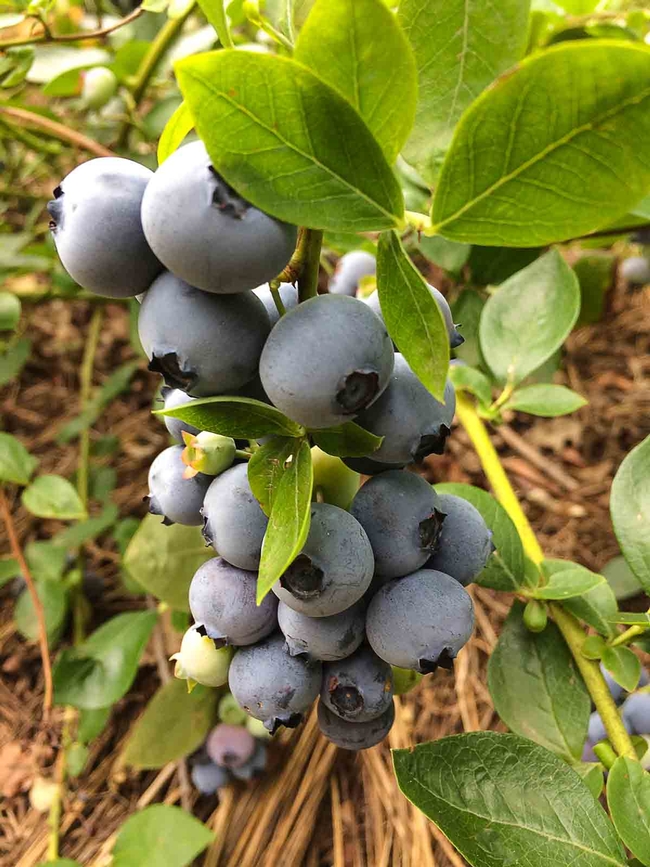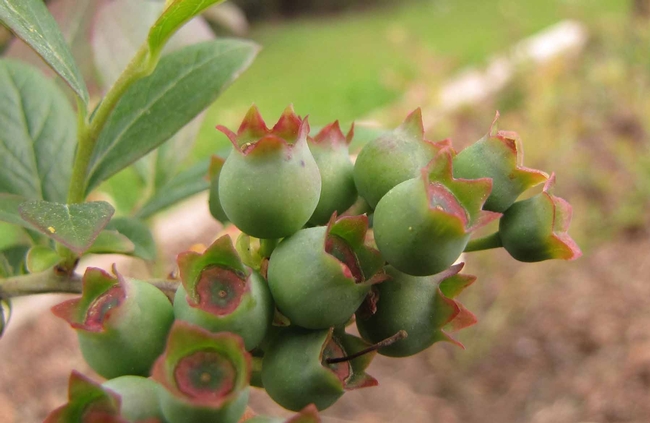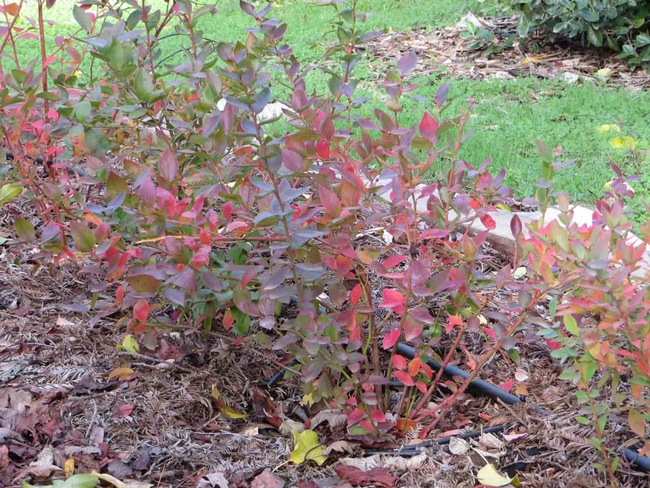If you've been wanting to grow your own blueberries, fall is a good time to plant a blueberry bush (or two, or three) in our climate. Many hybrid Southern highbush blueberry varieties have been adapted for the hot summers and low winter chilling seasons of our milder Valley climate, and will produce fruit from April through mid-July.

Like azaleas, blueberries belong to the family Ericaceae, and prefer acid soils with a pH of 4.5 to 5.5. Soil sulfur can be worked into the soil six to twelve months before planting, and side-dressed as needed in subsequent years. Peat moss too can be used to adjust acid levels. Soil testing kits are available at local nurseries and, used yearly, can spot when soil corrections are needed.
Most blueberries are deciduous shrubs that grow 4 to 6 ft. tall. Plants can be spaced 3 ft. apart for an informal hedge, or 4-5 ft. apart for individual shrubs. Place year-old blueberry plants in a sunny location. Two plants per person is advised, and some for the birds, unless you net your bushes. Because their shallow roots are 3-4 ft. wide, the soil should be dug this wide and at least 1-2 ft. deep. Amended soil in raised beds also works well.

Lightly roughen up the outside surface of a root-bound plant. Set the soil line of the trunk slightly above soil level to prevent settling. Cover soil with 4-6 inches of mulch to conserve moisture, prevent weeds, and add organic matter. Bark mulch (not cedar), pine needles, acid compost, and sawdust all work well.
Blueberries' shallow, fibrous roots need adequate drainage. Irrigate with soaker hoses, mini-sprinklers, or drip lines. Water is critical from berry development through harvest, also during bud formation in July and August. The amount of water will depend on soil type, drainage, and weather; too much water can result in root rot. For these reasons, frequent testing of soil moisture is recommended.
Take care to prevent over fertilizing. When needed, usually in early and late spring, gently rake back mulch and spread fertilizer on top of soil. Replace mulch and water well. Use a 10-10-10 mix or something similar containing ammonium sulfate and potassium sulfate, both of which are acid-forming. Sprinkle one and one-half tablespoons within 12-18 inches of each plant four weeks after planting. Double fertilizer amounts yearly up to a maximum of five tablespoons per plant.

It takes at least three years for a blueberry plant to become established and healthy. Remove all blossoms in the first few years to prevent small berries and spindly growth. Blueberry plants have a naturally bushy form, but the number of branches should be limited to the age of the plant, up to a maximum of six to eight branches for old bushes. Yearly remove one to two branches so that none are over four to six years old.
Southern highbush varieties include the early-ripening Misty, O'Neal and Jubilee; the early to mid-season Sharpblue; and the midseason varieties Southmoon and Sunshine Blue. For more information, see Blueberries in the UC California Garden Web.
Upcoming Berry Workshop. For more information on planting and caring for blueberries, raspberries, blackberries, and strawberries, attend the Master Gardener workshop by our berry expert in Paradise on October 20. For descriptions of this and all the other workshops in the Master Gardeners' Fall Workshop Series, visit our website. All workshops are free, but registration is required.

UC Master Gardeners of Butte County are part of the University of California Cooperative Extension (UCCE) system. To learn more about us and our upcoming events, and for help with gardening in our area visit our website. If you have a gardening question or problem, email the Hotline at mgbutte@ucanr.edu or leave a phone message on our Hotline at 530-552-5812. To speak to a Master Gardener about a gardening issue, or to drop by the MG office during Hotline hours, see the most current information on our Ask Us section of our website.